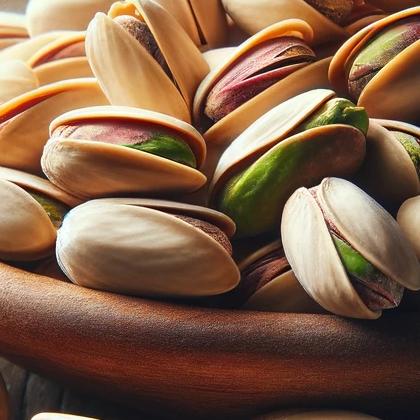Pistachios

The pistachio, Pistacia vera, a member of the cashew family, is a small tree originally from Central Asia and the Middle East. Pistachio trees can be found in regions of Iran, Syria, Lebanon, Turkey, Greece, Tunisia, Kyrgyzstan, Tajikistan, Turkmenistan, India, Pakistan, Egypt, Italy (Sicily), Uzbekistan, Afghanistan (especially in the provinces of Samangan and Badghis), and the United States, specifically in California. The tree produces a seed.Pistacia vera often is confused with other species in the genus Pistacia that are also known as pistachio. These species can be distinguished from P. vera by their geographic distributions (in the wild), and their seeds which are much smaller and have a shell that is not hard.
Pistachios Pairs With:

Pistachios Properties:
| Food Property | Type | Description |
|---|---|---|
| Flavor Profile | Sweet | Pistachios have a slightly sweet flavor. |
| Salty | Pistachios have a slightly salty taste. | |
| Texture | Crispiness/Crunchiness | Pistachios have a crunchy texture. |
| Nutritional Value | Macronutrients | Pistachios are rich in protein, healthy fats, and fiber. |
| Micronutrients | Pistachios are a good source of vitamins and minerals such as vitamin B6, thiamine, copper, and phosphorus. | |
| Fiber | Pistachios are high in dietary fiber. | |
| Color | Natural Pigments | Pistachios have a green color due to the chlorophyll content in the nuts. |
| Aroma | Volatile Compounds | Pistachios have a nutty aroma with hints of sweetness. |
| Chemical Composition | Water Activity (aw) | Pistachios have low water activity, which helps in extending their shelf life. |
Food Pairing App - Version 1.2.0
